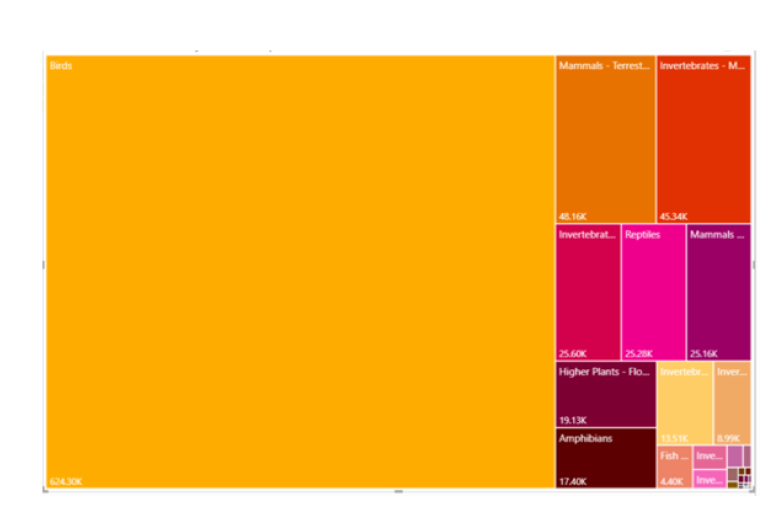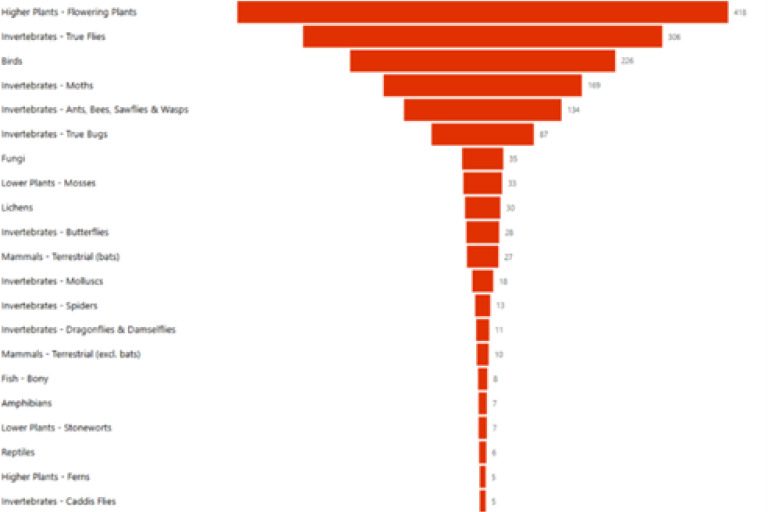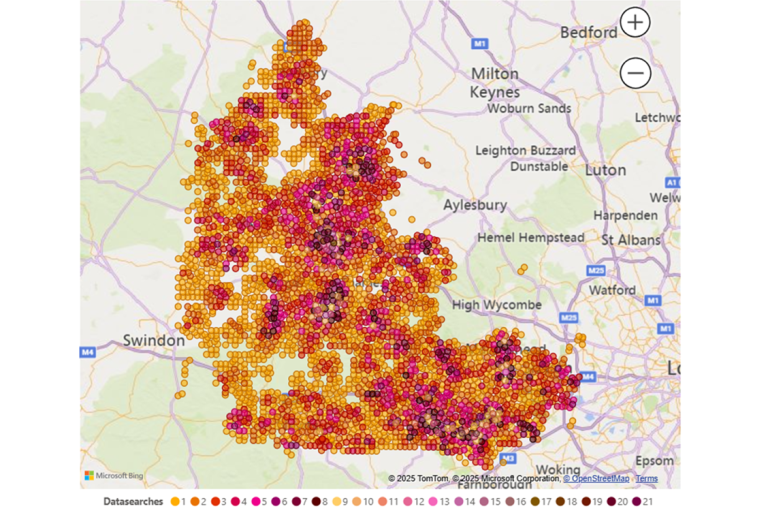Our dedicated team of staff and volunteers are constantly updating our database to ensure we have the most accurate and up-to-date picture of local wildlife. This data powers everything we do—including the hundreds of data searches we run each year to support conservation, planning, and research across Berkshire and Oxfordshire.
In 2024/25, TVERC carried out 1,027 data searches, with 878 of these including records of protected and notable species. In total, we shared an impressive 892,058 individual records—representing over 75% of all protected and notable records in our database. This highlights how actively these records are being used to inform real-world decisions.
These records weren’t just shared once. Some were used in up to 34 separate searches, especially those in the Oxford City area, showing how important urban biodiversity data can be. In total, there were 3.3 million instances of records being shared, with 97.2% of these being distinct from each other.
What species are being shared most?
Some species appear more frequently than others. Badger records were included in 94% of outputs, often at lower resolution to protect sensitive sites. Other commonly shared species included red kite, woodpigeon, common pipistrelle, and wren—each appearing in over 90% of search results.
Accounting for sharing's in multiple data search results, 864,415 records (96.9%) were distinct from other records. Notably, 3.7% of the distinct records shared were of woodpigeon, with wren, mallard and red kite each contributing over 2.5% of the total number of shared records.
Among the top 50 species shared:
- 43 were birds
- 1 reptile (slow-worm)
- 3 mammals (common & soprano pipistrelle, hedgehog)
- 1 amphibian (great-crested newt)
- 2 insects (small heath butterfly, stag beetle)
Birds dominated the data, making up 72.2% of distinct records shared. Other groups with more than 10,000 shared records included bats, moths, butterflies, reptiles, mammals, flowering plants, amphibians, and beetles.

Local and national experts had supplied 11.6% of the shared records, only surpassed by the Berkshire Bird Clubs (26.6%) and BBOWT (12.3%). BTO, Oxfordshire Ornithological Society and professional ecological consultants each contributed more than 5% of the records. 1.1% of records came from TVERC’s local wildlife site surveying programme and 0.7% of records had been imported from iRecord.
The shared records spanned a wide range of taxa:
- 482 beetle taxa
- 418 flowering plants
- 306 true flies
- 226 birds
- 169 moths
- 134 ants, bees, wasps & sawflies and 87 true bugs.
Other groups had 35 or fewer taxa shared, including 6 reptile species and 7 amphibian species.

Shared records were distributed widely across both counties, with some gaps in areas like the Berkshire Downs area of West Berks and parts of the Vale of White Horse and to the north of West Oxfordshire.

Your records matter
Every record submitted helps build a clearer picture of our region’s biodiversity. Whether you're a seasoned recorder or a new volunteer, your contributions are making a real impact—informing planning decisions, guiding conservation efforts, and protecting wildlife across Oxfordshire and Berkshire.
Interested in sharing your wildlife records?
Visit www.tverc.org/recorders/share-your-records to find out how you can contribute to our database.
Need biodiversity data for your project or planning application?
Request a data search here: www.tverc.org/data-searches